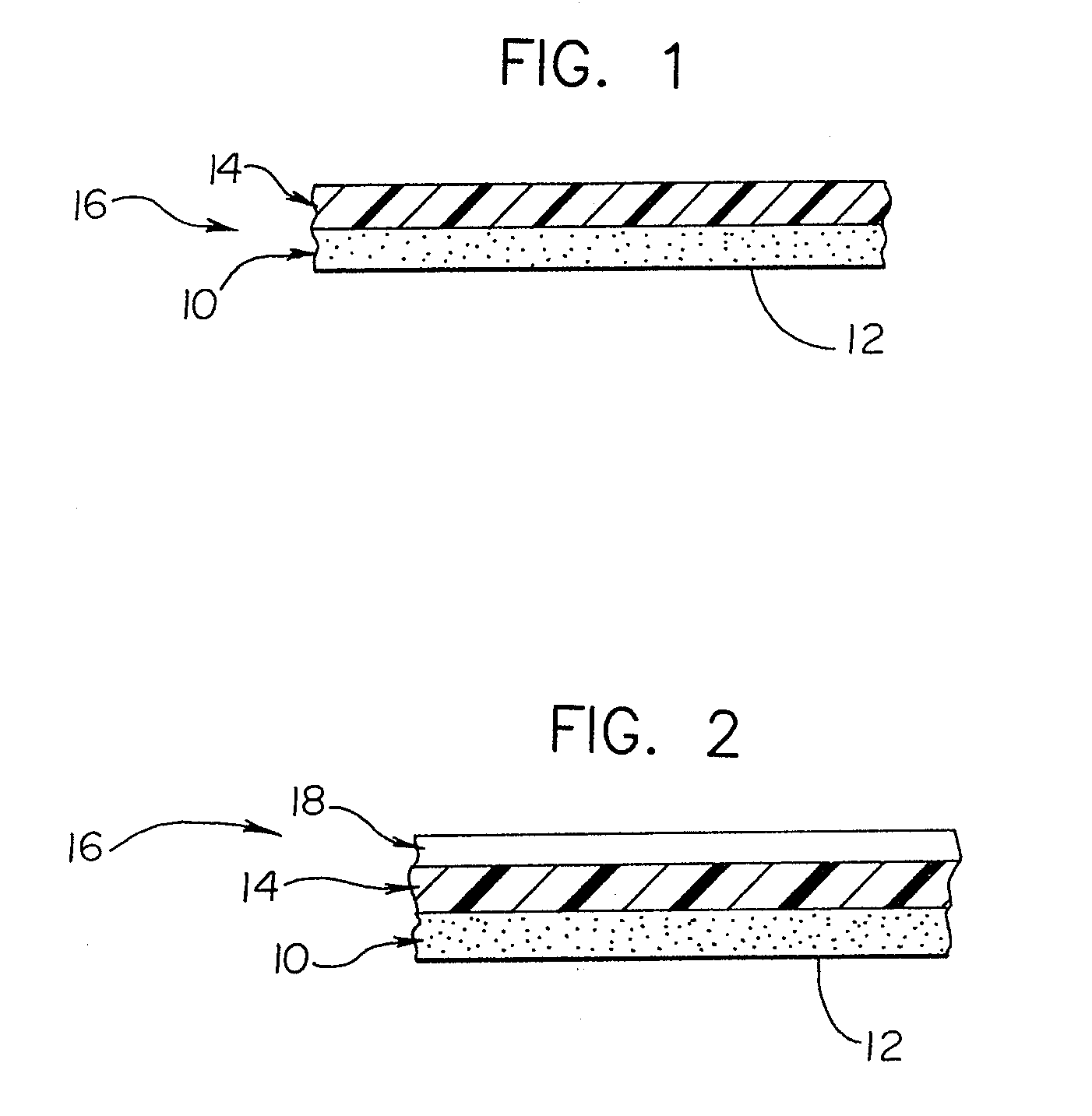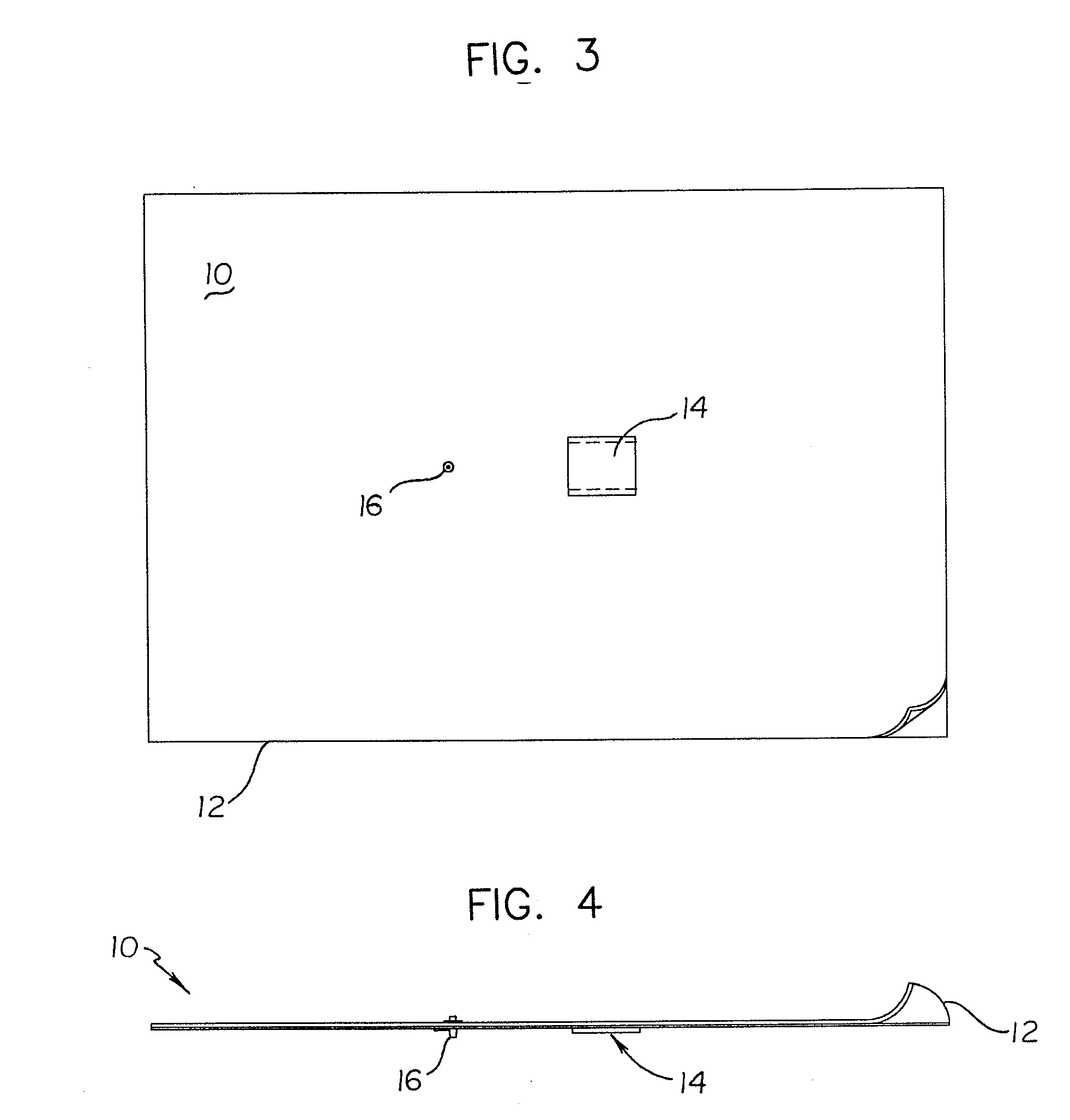Surgical drape
a technology of antimicrobial agents and surgical drapes, which is applied in the field of medical grade antimicrobial adhesives, can solve the problems of short effective delivery time, high likelihood of bacterial contamination immediately preceding, and limited ability of presently known antimicrobial agents to withstand heat during processing, so as to reduce the luminous intensity of light reflected from the surface and minimize the effect of reflectivity
- Summary
- Abstract
- Description
- Claims
- Application Information
AI Technical Summary
Benefits of technology
Problems solved by technology
Method used
Image
Examples
Embodiment Construction
[0055] As required, detailed embodiments of the present invention are disclosed herein. However, it is to be understood that the disclosed embodiments are merely exemplary of the present invention which may be embodied in various systems. Therefore, specific details disclosed herein are not to be interpreted as limiting, but rather as a basis for the claims and as a representative basis for teaching one skilled in the art to variously practice the present invention.
[0056] The present invention is an adhesive compound which incorporates an adhesive component together with a broad spectrum antimicrobial agent dispersed therethrough. The antimicrobial agent is homogeneously dispersed throughout the adhesive layer 10. Active antimicrobial molecules of the present composition disassociate from the surface or leach out of the adhesive matrix over time, delivering biocidal activity at a distance from the adhesive surface 12. Applicants have conclusively demonstrated by zone of inhibition ...
PUM
| Property | Measurement | Unit |
|---|---|---|
| wavelength | aaaaa | aaaaa |
| temperature | aaaaa | aaaaa |
| wavelength | aaaaa | aaaaa |
Abstract
Description
Claims
Application Information
 Login to View More
Login to View More - R&D
- Intellectual Property
- Life Sciences
- Materials
- Tech Scout
- Unparalleled Data Quality
- Higher Quality Content
- 60% Fewer Hallucinations
Browse by: Latest US Patents, China's latest patents, Technical Efficacy Thesaurus, Application Domain, Technology Topic, Popular Technical Reports.
© 2025 PatSnap. All rights reserved.Legal|Privacy policy|Modern Slavery Act Transparency Statement|Sitemap|About US| Contact US: help@patsnap.com



